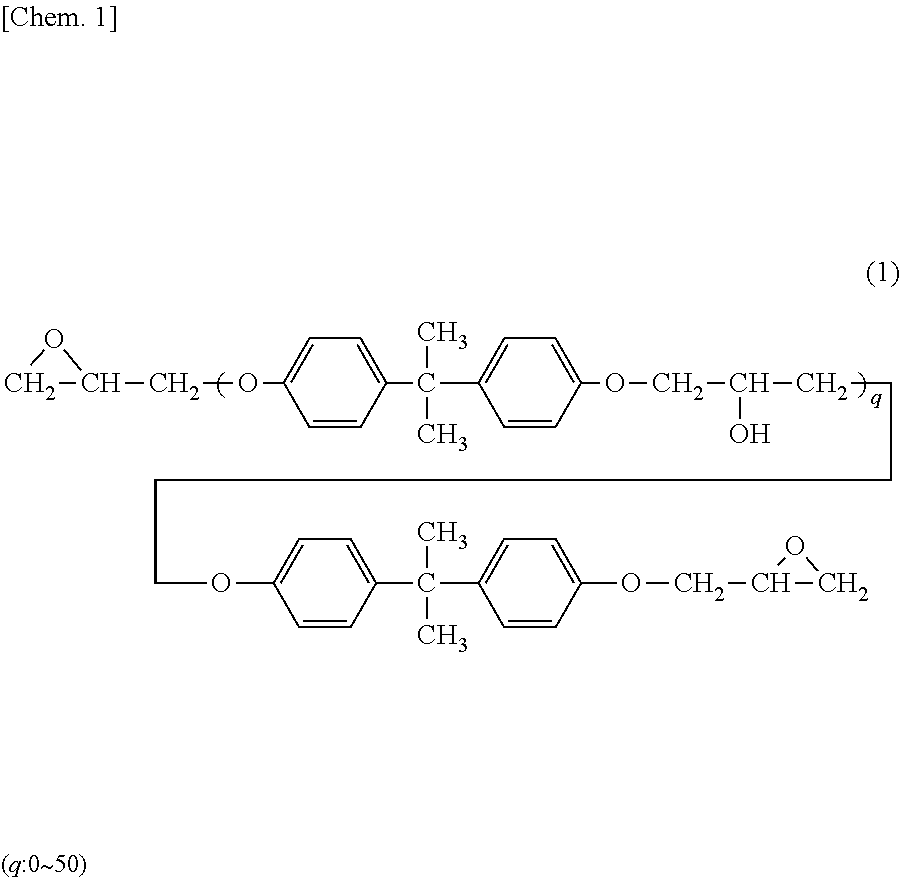Zinc-based metal coated steel sheet
- Summary
- Abstract
- Description
- Claims
- Application Information
AI Technical Summary
Benefits of technology
Problems solved by technology
Method used
Image
Examples
synthesis example 1
g6: [Synthesis Example 1]
[0200]EP828 (manufactured by Yuka Shell Epoxy K.K., epoxy equivalent: 187) (1870 parts by mass), bisphenol A (91 2 parts by mass), tetraethylammonium bromide (2 parts by mass), and methyl isobutyl ketone (300 parts by mass) were charged into a four-necked flask. The mixture was heated to 140° C. and reacted for 4 hours to give an epoxy resin having an epoxy equivalent of 1391 and a solid content of 90% by mass. Ethylene glycol mono-n-butyl ether (1500 parts by mass) was added thereto. The mixture was cooled to 100° C. Then 3,5-dimethylpyrazole (molecular weight: 96) (96 parts by mass) and dibutylamine (molecular weight: 129) (129 parts by mass) were added thereto. The mixture was reacted for 6 hours until the epoxy groups disappear. Methyl isobutyl ketone (205 parts by mass) was then added thereto with cooling, thereby yielding a pyrazole-modified epoxy resin having a solid content of 60% by mass. This resin is defined as an organic resin (g6). The organic r...
synthesis example 2
g7: [Synthesis Example 2]
[0201]EP1007 (manufactured by Japan Epoxy Resin Co., Ltd., epoxy equivalent: 2000) (4000 parts by mass) and ethylene glycol mono-butyl ether (2239 parts by mass) were charged into a four-necked flask. The mixture was heated to 120° C. to completely dissolve the epoxy resin in 1 hour. The solution was cooled to 100° C. Then 3-amino-1,2,4-triazole (molecular weight: 84) (168 parts by mass) was added thereto. The mixture was reacted for 6 hours until the epoxy groups disappear. Methyl isobutyl ketone (540 parts by mass) was then added thereto with cooling, thereby yielding a triazole-modified epoxy resin having a solid content of 60% by mass. This resin is defined as an organic resin (g7). The organic resin (g7) is a reaction product of the organic resin (C) and the active hydrogen-containing compound (i) that contains the active hydrogen-containing hydrazine derivative (h) in an amount of 100 mol %.
k1: Ca ion-exchanged silica (Model: SHIELDEX C303, manufacture...
PUM
| Property | Measurement | Unit |
|---|---|---|
| Length | aaaaa | aaaaa |
| Fraction | aaaaa | aaaaa |
| Percent by mass | aaaaa | aaaaa |
Abstract
Description
Claims
Application Information
 Login to View More
Login to View More - R&D
- Intellectual Property
- Life Sciences
- Materials
- Tech Scout
- Unparalleled Data Quality
- Higher Quality Content
- 60% Fewer Hallucinations
Browse by: Latest US Patents, China's latest patents, Technical Efficacy Thesaurus, Application Domain, Technology Topic, Popular Technical Reports.
© 2025 PatSnap. All rights reserved.Legal|Privacy policy|Modern Slavery Act Transparency Statement|Sitemap|About US| Contact US: help@patsnap.com

